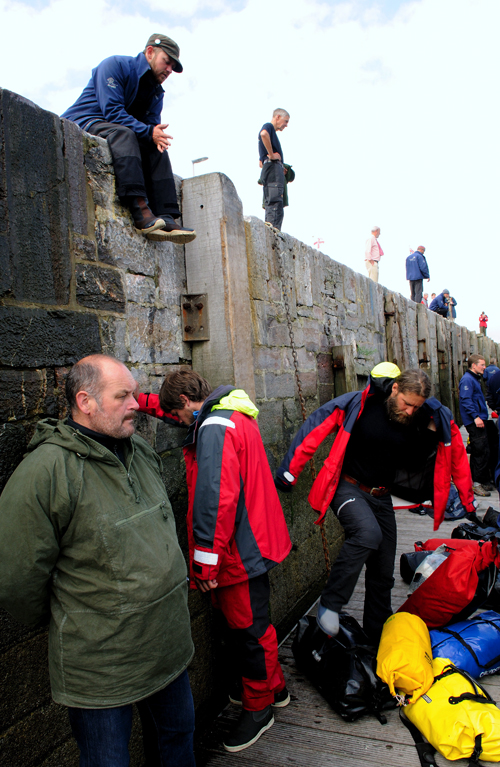Still in Lowestoft. The ship has been cleaned, the change of crew is over – but the waiting is not.
The weather forecast is teasing us. Light winds and high pressure, north-westerly winds for two days and then easterlies – not the best starting point for the stretch across the North Sea to the mouth of the Limfjord.
So we wait and wait – for the latest news from the skipper, for mealtimes, for jobs to be done or ideas that activate us and alleviate the boredom. It is difficult to differentiate the days from each other and get up for nothing. At home we would welcome a day off, but here we’re paralysed and we roam about, over-tired and lazy, from coffee bar to coffee bar. The waiting is a hard test of patience when you're in the middle of an extreme and dramatic adventure such as sailing the Sea Stallion.
The mood on board is indescribable: black, cliquey, and a good barometer for the degree of long-voyage blues.
In the foreship section, there is ‘the white stone’ – a trophy that rotates among the crew and is awarded for extreme madness. The glad recipients have had to rip hairs from their chests using gaffa tape, climb the mast to polish the lantern, or sit naked as a figurehead on the fore stay to be worthy of the unusual prize.
In the midship section, Joe Cocker’s ‘You can leave your hat on’ is hummed every time a hand just takes his cap off or even thinks about taking his woollen sweater off. The midship section has also introduced dictator day – the dictatorship goes to each hand in turn; as well as getting a funny name, they may dictate anything from a mayonnaise-free lunch to having breakfast served on the soft oars that make up our beds.
In the aftership section there is a family drama à la TV series Days Of Our Lives, with a colourful cast and no excuse for leaving the role.
Yesterday the wait and boredom were interrupted by a visit to Sutton Hoo – the largest collection of burial mounds from the bronze and iron ages in England. Most impressive was the find of a ship’s grave from the 7th century. Because of the sand in the grave, all the wood has disappeared and only the impression of the clinker-built ship and the iron nails remain. Better preserved is the burial chamber itself. The deceased, believed to be King Raedwald of East Anglia, was buried in colourful clothes with gold-plated drinking horns, shoulder pieces, harnesses and weapons.
The ship’s grave was excavated in 1939 and the museum at Sutton Hoo has hopes of being able to reconstruct the longship in the future on the basis of drawings from the impressions.
The tension will be resolved at the evening meal. Here we will be told whether we will sail or stay. If we do have to wait even longer for the right wind, then we have a couple of ideas ready – a grill party at camp site, a film marathon in the club house, and a lecture on the Oseberg and Ladby ships. But most of all, we want to sail to Denmark.
